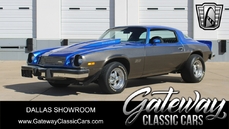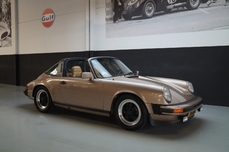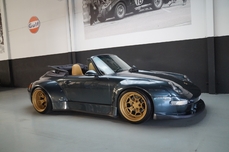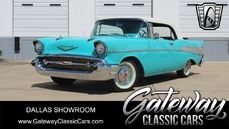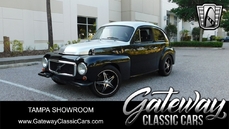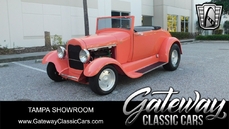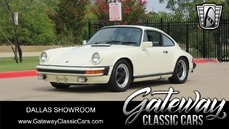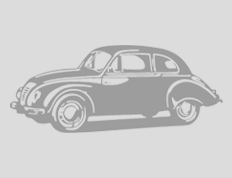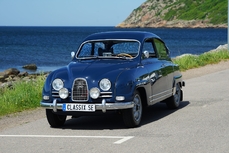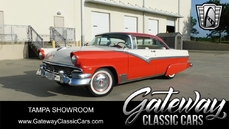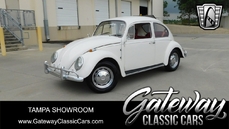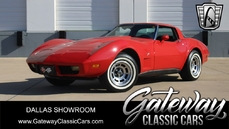| 13081 records |
|
1/437 pages |
Sub type : Sedan
Year : 1937
Seller : Gateway Classic Cars - Tampa
Description : Mileage : 85392 BodyStyle : sedan Interior Color : Gray Exterior Color : Blackcherry VIN : 3133191 Transmission Description : 3 speed Manual Doors : 4 Description : Gateway Classic Cars of Tampa is proud to present this elegant 1937 Cadillac Fleetwood 75 Series. This magnificent vehicle boasts a striking black cherry exterior that exudes...
Sub type : Coupé
Year : 1975
Seller : Gateway Classic Cars - Dallas
Description : Mileage : 31000 BodyStyle : coupe Interior Color : Black Exterior Color : Blue VIN : 1Q87H5N597760 Transmission Description : 4 Speed Manual Doors : 2 Description : Gateway Classic Cars of Dallas presents the 1975 Chevrolet Camaro RS, a classic American muscle car that exudes both style and performance. This iconic vehicle comes in a striking...
Sub type : Coupé
Year : 1969
Seller : Legendary Classics
Description : 1969 Porsche 912 – Restored to original condition.
This 1969 Porsche 912 is a beautiful example of a classic air-cooled Porsche, presented in its original Irish Green (code 6806) over a black leather interior. It has undergone a body-off restoration that was carried out with a strong focus on originality and quality, resulting in a clean, solid, and highly attractive car that's ready to be driven and enjoyed.
The restoration was professionally performed to a high standard, with careful attention to preserving the authentic look and feel of the car. It's a great-looking 912, with plenty of presence, backed up by extensive documentation and a well-preserved history file.
Highlights
Body-off restoration, carried out with care and attention to originality
Factory-original Irish Green paintwork (code 6806) – striking and correct
Black leather interior, nicely restored and true to period
All trim, gauges, and features in place – tasteful, original presentation
Mechanically in strong condition – starts, runs, and drives well
Extensive service and restoration documentation included
History file with ownership and maintenance records
Why the 912 Matters
The Porsche 912 has carved out a loyal following thanks to its blend of early 911 styling and more nimble, balanced handling. Lighter than its six-cylinder sibling, the 912 delivers a classic Porsche driving experience that’s engaging, rewarding, and refreshingly analogue feel.
This example hits the sweet spot — restored with care, tastefully finished, and ready to be enjoyed on the road.
Location & Viewing
The car is located in the Netherlands and viewings are available by appointment only. Remote as well as local buyers are welcome to request a video call walkaround, and export/shipping assistance can be arranged.
Contact Dominique at +31623679846 to schedule your viewing or ask for more details.
This Porsche has Belgian paperwork which makes it easy to register in any EU country.
Call 0031623679846 for more information.
We ship to any location in the world. Ask our partner FreightHammer for a free shipping quote! (http://www.freighthammer.com/)
Wir sprechen Deutsch, We speak English, Nous parlons Français, Wij spreken Nederlands.
Sub type : Convertible
Year : 1982
Seller : Legendary Classics
Description : 1982 Porsche 911 SC Targa – Matching Numbers Zinn Metallic
Looking for a truly original air-cooled Porsche with charisma, pedigree, and honesty? This 1982 Porsche 911 SC Targa ticks all the boxes.
Finished in its striking Zinn Metallic over Beige leather interior, this is a classic that speaks to purists and collectors alike.
Lovingly maintained and exceptionally well-preserved, this SC Targa combines originality with light patina in all the right places. A dry-climate car, used only in fair weather, and complete with full documentation, she remains a standout example of the dependable and desirable Super Carrera generation.
________________________________________
Key Highlights
• First registered: 28-02-1982
• One Dutch owner since 2018
• Matching numbers – engine and gearbox
• Beautiful Zinn Metallic with Beige leather interior
• Interior in pristine condition – no cracks, fading, or aftermarket mods
• Original Fuchs wheels, steering wheel, Blaupunkt radio, and correct shifter
• Complete with service books, manuals, and history file
• Always garage-stored and driven in dry conditions only
• Mechanically sound and regularly serviced
________________________________________
Driving Experience
The 3.0L flat-six in the 911 SC is known for its bulletproof reliability and punchy power delivery. Paired with a crisp 5-speed manual gearbox, this car offers the pure, analog Porsche feel that made the brand legendary. Whether you're taking the scenic route with the Targa roof open or carving back roads, this SC delivers the kind of connection modern cars just can’t replicate.
________________________________________
Location & Viewings
The vehicle is available for viewing by appointment at Legendary Classics in Etten-Leur, The Netherlands. Local & remote buyers are welcome to request a video call walkaround, and international shipping/export assistance is available.
Contact Dominique directly at +31 6 23679846 for more information or to schedule a visit.
This Porsche has Dutch paperwork which makes it easy to register in any EU country.
Call 0031623679846 for more information.
We ship to any location in the world. Ask our partner FreightHammer for a free shipping quote! (http://www.freighthammer.com/)
Wir sprechen Deutsch, We speak English, Nous parlons Français, Wij spreken Nederlands.
Sub type : Convertible
Year : 1995
Seller : Legendary Classics
Description : 1995 RWB Porsche 993 Cabriolet – RWB Europe #13
This isn’t just a Porsche. This is RWB Europe #13 — a hand-built, air-cooled icon personally shaped and signed by Akira Nakai, in collaboration with John Vianen at the official RWB Europe Headquarters.
Built on a pristine 1995 Porsche 993 Cabriolet, this car was chosen for its exceptional condition and transformed into a truly unique machine. With only 52,218 km since the complete rebuild, it combines raw presence with refinement, finished in elegant Aventurin Green Metallic over a freshly reupholstered tan leather interior. The exceptional “Rotiform Design” wheels complete the look.
This is one of the few convertible-based RWB builds ever made — and it’s not just rare, it’s signed in multiple places by Nakai-San himself, making it a collector’s dream with real provenance.
________________________________________
Build Highlights
• Official RWB build (#13) – constructed at RWB Europe HQ
• Built in collaboration with Akira Nakai and John Vianen
• Nakai-San’s signature visible in multiple places on the car
• Donor car: 1995 Porsche 993 Cabriolet – outstanding base condition
• Only 52,218 km since full rebuild and conversion
• Aventurin Green Metallic exterior – rare and rich color
• Fully reupholstered tan leather interior – clean, elegant, and custom
• Widebody RWB kit – iconic flares, bumpers, skirts, and fixed wing
• Custom Rotiform wheels – rare, high-end wheels that complete the look
• Lowered suspension setup for precise handling and stance
• Sports exhaust system – tuned sound to match the look
• Engine left stock – original power, authentic reliability
• Light modifications to the undercarriage as part of the build
• Known ownership history, full documentation included
________________________________________
A True Collector’s RWB
Each RWB car is a one-off. There’s no replica, no second version, and no shortcut — just a personal build experience with Nakai-san, shaped around the soul of the donor car. RWB Europe #13 is more than a showstopper — it’s part of the legacy. With its signed panels, refined interior, low kilometers and convertible base, this is a rare opportunity to own one of the most collectible air-cooled RWBs ever built in Europe.
________________________________________
Location & Viewings
The car is available for viewing by appointment only at Legendary Classics in Etten-Leur, The Netherlands.
Remote buyers are welcome to request a video walkaround, and worldwide shipping/export logistics can be arranged.
Contact Dominique at +31 6 23679846 for more info or to arrange a viewing.
This Porsche has Belgian paperwork which makes it easy to register in any EU country.
Call 0031623679846 for more information.
We ship to any location in the world. Ask our partner FreightHammer for a free shipping quote! (http://www.freighthammer.com/)
Wir sprechen Deutsch, We speak English, Nous parlons Français, Wij spreken Nederlands.
Sub type : Convertible
Year : 2001
Seller : Legendary Classics
Description : Stunning condition 2001 Porsche 911 (996) Carrera 2 Convertible:
A Rare Opportunity for Enthusiasts and Collectors!
This 2001 Porsche 911 (996) Carrera 2 Convertible represents a unique opportunity to own a meticulously maintained, low-mileage sports car with a rare manual transmission and a stunning, distinctive colour scheme (Smoke Silver over Terracotta).
Combining rarity, performance, and elegance, this Porsche is not just a pleasure to drive but also a sound investment. Over the last few years, the popularity of 996 models has surged dramatically, with significant price increases—in some cases, doubling in just over two years.
Once considered the stepchild of the 911 family, the 996 has firmly established itself as one of the most investable Porsches of its era, with experts predicting continued appreciation in value.
Key Highlights
Manual Transmission Rarity: This model is among the select few equipped with a manual gearbox, offering an authentic and engaging driving experience that true enthusiasts cherish.
Low Mileage: With only 85,350 original kilometres, this vehicle's limited use is substantiated by the original, stamped Porsche service books, ensuring its authenticity and well-preserved condition.
Unique Color Combination: The exterior boasts a rare Smoke Silver finish, complemented by a luxurious Terracotta interior. This distinctive pairing enhances the vehicle's allure and sets it apart from standard models.
Comprehensive Maintenance: This Porsche has been meticulously maintained, with a full major service completed just 2,500 kilometres ago. All maintenance records are documented in the original service books, reflecting the car's excellent care.
(IMS bearings recorded to be changed)
German TÜV Certification: Having recently passed the rigorous German TÜV inspection, renowned as Europe's most stringent, this vehicle's superior technical condition is confirmed. The successful inspection has also facilitated a German registration, simplifying the process for re-registration across various regions.
Extensive Options: This Carrera 2 Convertible is heavily optioned, (Full option actually), enhancing both comfort and driving pleasure.
Why Invest in the Porsche 996?
The Porsche 996 has experienced a remarkable transformation in its perception among enthusiasts and collectors. Once seen as an outlier within the 911 lineage, the 996 has emerged as a highly sought-after model. Its rising popularity is driven by its unique design, exceptional driving dynamics, and relative affordability compared to other 911 variants. In the last two years, 996 prices have doubled, making it one of the most investable Porsches of its era. Experts agree that this trend is likely to continue as the 996 transitions from an underrated option to a celebrated icon.
This Porsche has German paperwork which makes it easy to register in any EU country.
Call 0031623679846 for more information.
We ship to any location in the world. Ask our partner FreightHammer for a free shipping quote! (http://www.freighthammer.com/)
Wir sprechen Deutsch, We speak English, Nous parlons Français, Wij spreken Nederlands.
Sub type : Convertible
Year : 1990
Seller : Legendary Classics
Description : For Sale: 1990 Ferrari 348 TS – A True Italian Classic
This 1990 Ferrari 348 TS, a well-preserved driver’s car that embodies the classic spirit of Ferrari. This model offers a genuine, analog driving experience that car enthusiasts will appreciate.
Why This Ferrari 348 TS Stands Out
One of the most striking features of this 348 TS is its rare and elegant colour combination: a deep Nero (black) exterior paired with a rich Cuoio (tan leather) interior. Unlike the more common red Ferraris, this sophisticated pairing sets it apart, adding a touch of refinement while still exuding Ferrari’s iconic presence.
Key Specifications:
Year: 1990
Mileage: 48,984 km
Engine: 3.4L V8 – 300 HP
Transmission: 5-speed manual
Body style: Targa (removable roof panel) for open-air thrills
Exterior colour: Nero (black)
Interior colour: Cuoio (tan leather)
Keys: 2
Highlights:
✔ Rare Colour Combination – A departure from the typical Rosso Corsa, offering a more understated but still unmistakably Ferrari look.
✔ Iconic Design – Testarossa-inspired side strakes and classic squared-off taillights.
✔ Driver-Focused Experience – Naturally aspirated V8 paired with a gated manual shifter for pure driving engagement.
✔ Well-Maintained – The car comes from a collection and remains in original, unmodified condition, preserving its authenticity.
✔ Service and Maintenance – The car requires a service and timing belt change, which we can arrange upon request.
Honest Presentation:
While the exterior is in very presentable condition, the interior shows some signs of wear, typical for its age and use. The driver’s seat has visible wear, and a few buttons are slightly loose. These imperfections are part of the car’s history as a driver’s car rather than a showpiece. This is also reflected in the asking price, making it a fair and accessible option for those who value driving enjoyment alongside collectability.
Ownership and Documentation:
Belgian registration: We can assist with delivery on EU plates.
Ownership History: 3 former owners
Documentation: Fully documented, well cared for throughout its life.
Price: €61,348,—
Serious inquiries only. Viewings and test drives are available by appointment.
Don’t miss the opportunity to own a Ferrari 348 TS that offers both classic charm and driving pleasure.
This Ferrari has Belgian paperwork which makes it easy to register in any EU country.
Call 0031623679846 for more information.
We ship to any location in the world. Ask our partner FreightHammer for a free shipping quote! (http://www.freighthammer.com/)
Wir sprechen Deutsch, We speak English, Nous parlons Français, Wij spreken Nederlands
Sub type : Convertible
Year : 1967
Seller : Legendary Classics
Description : Beautiful 1967 The Austin Healey 3000 MKIII Right Hand Drive.
The 1967 Austin Healey 3000 MKIII is a pinnacle of British motoring history, combining classic style with exceptional engineering. This version is a rare right-hand drive type, making it a great find for fans and collectors alike.
Timeless Design
The Austin Healey 3000 MKIII, with its elegant lines and polished aesthetics, personifies the golden age of British sports vehicles. This specimen has a beautiful two-tone paint scheme in blue and white that is in good shape. The chrome trim is all present and well-preserved, which enhances the car's overall attractiveness. With its beautiful proportions, this Healey is a great eye-catcher.
Performance & Handling
Under the hood is a matching numbers 2.9-liter straight-six engine producing 150 horsepower and paired to a slick four-speed manual transmission with overdrive. Technically, this automobile is in fantastic condition—even when ice cold, it starts easily on first crank. This dependability and performance make it an ideal driver for individuals who enjoy the simplicity of classic motoring.
Comfort and practicality
The MKIII aimed to improve driver and passenger comfort, and this model is no exception. The soft top is in fantastic shape, and the car comes with an extra tonneau cover that can be zipped up to close off the cabin for short trips without fully deploying the roof. Furthermore, it has detachable windows for further adaptability, making it ideal for both open-air sailing and inclement weather.
Authenticity and Heritage
This Austin Healey 3000 MKIII is a real collector's item, complete with its original tool kit and Heritage Certificate, which confirms its authenticity and originality. The car's exceptional quality speaks for itself, demonstrating the benefits of a competent restoration. Despite being an older restoration, the car remains in excellent condition, making it a magnificent and dependable driver rather than a concours showpiece.
Key features:
Year: 1967
Model: Austin Healey 3000 Mk III
Drive: right-hand drive.
Engine: 2.9L straight-six (matched numbers)
Transmission: 4-speed manual, including overdrive.
Color: two-tone blue and white.
Interior: Black leather with blue piping (As new)
Soft Top: Good condition, with an extra tonneau cover.
Wheels: Beautiful wire wheels with knockoff centre locks.
Accessories: Original toolkit, detachable windows, and Heritage Certificate.
Why Should You Choose This Healey?
This vehicle blends timeless style, dependable performance, and original features to form a truly exceptional combination. This 1967 Austin Healey 3000 MKIII, with its two-tone paint, expert restoration, and outstanding mechanical condition, is ideal for anyone looking for a high-quality classic that is ready to drive and enjoy. Its matching numbers engine and associated Heritage Certificate make it an excellent choice for aficionados who respect originality.
Final Thoughts
Owning a 1967 Austin Healey 3000 MKIII is an opportunity to relive the glory days of British motoring. This right-hand drive model is a unique and wonderful find that combines elegance and usability. Whether for weekend excursions or addition to a selective collection, this Healey is sure to please.
Contact us today to schedule a viewing or find out more about this amazing classic!
This Healey has EU paperwork which makes it easy to register in any EU country.
Call 0031623679846 for more information.
We ship to any location in the world. Ask our partner FreightHammer for a free shipping quote! (http://www.freighthammer.com/)
Wir sprechen Deutsch, We speak English, Nous parlons Français, Wij spreken Nederlands.
Sub type : Convertible
Year : 1967
Seller : Legendary Classics
Description : Beautiful 1967 The Austin Healey 3000 MKIII Right Hand Drive.
The 1967 Austin Healey 3000 MKIII is a pinnacle of British motoring history, combining classic style with exceptional engineering. This version is a rare right-hand drive type, making it a great find for fans and collectors alike.
Timeless Design
The Austin Healey 3000 MKIII, with its elegant lines and polished aesthetics, personifies the golden age of British sports vehicles. This specimen has a beautiful two-tone paint scheme in blue and white that is in good shape. The chrome trim is all present and well-preserved, which enhances the car's overall attractiveness. With its beautiful proportions, this Healey is a great eye-catcher.
Performance & Handling
Under the hood is a matching numbers 2.9-liter straight-six engine producing 150 horsepower and paired to a slick four-speed manual transmission with overdrive. Technically, this automobile is in fantastic condition—even when ice cold, it starts easily on first crank. This dependability and performance make it an ideal driver for individuals who enjoy the simplicity of classic motoring.
Comfort and practicality
The MKIII aimed to improve driver and passenger comfort, and this model is no exception. The soft top is in fantastic shape, and the car comes with an extra tonneau cover that can be zipped up to close off the cabin for short trips without fully deploying the roof. Furthermore, it has detachable windows for further adaptability, making it ideal for both open-air sailing and inclement weather.
Authenticity and Heritage
This Austin Healey 3000 MKIII is a real collector's item, complete with its original tool kit and Heritage Certificate, which confirms its authenticity and originality. The car's exceptional quality speaks for itself, demonstrating the benefits of a competent restoration. Despite being an older restoration, the car remains in excellent condition, making it a magnificent and dependable driver rather than a concours showpiece.
Key features:
Year: 1967
Model: Austin Healey 3000 Mk III
Drive: right-hand drive.
Engine: 2.9L straight-six (matched numbers)
Transmission: 4-speed manual, including overdrive.
Color: two-tone blue and white.
Interior: Black leather with blue piping (As new)
Soft Top: Good condition, with an extra tonneau cover.
Wheels: Beautiful wire wheels with knockoff centre locks.
Accessories: Original toolkit, detachable windows, and Heritage Certificate.
Why Should You Choose This Healey?
This vehicle blends timeless style, dependable performance, and original features to form a truly exceptional combination. This 1967 Austin Healey 3000 MKIII, with its two-tone paint, expert restoration, and outstanding mechanical condition, is ideal for anyone looking for a high-quality classic that is ready to drive and enjoy. Its matching numbers engine and associated Heritage Certificate make it an excellent choice for aficionados who respect originality.
Final Thoughts
Owning a 1967 Austin Healey 3000 MKIII is an opportunity to relive the glory days of British motoring. This right-hand drive model is a unique and wonderful find that combines elegance and usability. Whether for weekend excursions or addition to a selective collection, this Healey is sure to please.
Contact us today to schedule a viewing or find out more about this amazing classic!
This Healey has EU paperwork which makes it easy to register in any EU country.
Call 0031623679846 for more information.
We ship to any location in the world. Ask our partner FreightHammer for a free shipping quote! (http://www.freighthammer.com/)
Wir sprechen Deutsch, We speak English, Nous parlons Français, Wij spreken Nederlands.
Sub type : Coupé
Year : 1977
Seller : Gateway Classic Cars - Tampa
Description : Mileage : 16724 BodyStyle : coupe Interior Color : Red Exterior Color : White VIN : 1Z37L7S401069 Transmission Description : 4-Speed Manual Doors : 2 Description : Gateway Classic Cars of Tampa is proud to offer this sleek and hard to find 1977 Chevrolet Corvette. The Third Generation Corvettes or "C3s" have transitioned from being nearly...
Sub type : Convertible
Year : 1957
Seller : Gateway Classic Cars - Dallas
Description : Mileage : 2821 BodyStyle : convertible Interior Color : Turquoise Exterior Color : Turquoise VIN : VC57T164516 Transmission Description : 700R4 4 Speed Overdrive Automatic Doors : 2 Description : Gateway Classic Cars is proud to introduce this captivating 1957 Chevrolet Bel Air Convertible, a timeless classic that captures the essence of...
Sub type : Station wagon
Year : 2005
Seller : AutoTrek
Description : AutoTrek is one of the top used car dealerships in Littleton. We offer an extensive inventory of quality used cars, used trucks, and used SUVs for sale. We partner with many Colorado credit unions to offer flexible financing options so first-time buyers and those with less-than-perfect credit can find great solutions. We pride ourselves on our transparent, no-haggle pricing and our commitment to customer satisfaction. Our quality inspection process ensures you're getting a reliable vehicle. Beyond sales, we offer services like auto brokerage, trade-in assistance, and even vehicle delivery. Schedule a test drive today and experience the AutoTrek difference.
Find quality used cars, SUVs, and used trucks for sale at our dealership today!
Sub type : Station wagon
Year : 2005
Seller : AutoTrek
Description : AutoTrek is one of the top used car dealerships in Littleton. We offer an extensive inventory of quality used cars, used trucks, and used SUVs for sale. We partner with many Colorado credit unions to offer flexible financing options so first-time buyers and those with less-than-perfect credit can find great solutions. We pride ourselves on our transparent, no-haggle pricing and our commitment to customer satisfaction. Our quality inspection process ensures you're getting a reliable vehicle. Beyond sales, we offer services like auto brokerage, trade-in assistance, and even vehicle delivery. Schedule a test drive today and experience the AutoTrek difference.
Find quality used cars, SUVs, and used trucks for sale at our dealership today!
Sub type : Coupé
Year : 1959
Seller : Gateway Classic Cars - Tampa
Description : Mileage : 615 BodyStyle : coupe Interior Color : Black Exterior Color : Black / Silver VIN : 211578 Transmission Description : Automatic Doors : 2 Description : Gateway Classic Cars of Tampa is proud to present this wild and unique, 1959 Volvo PV544! Anyone familiar with Volvos knows the styling inspiration of the Volvo P544 has far more in...
Sub type : Coupé
Year : 1970
Seller : Gateway Classic Cars - Dallas
Description : Mileage : 3260 BodyStyle : coupe Interior Color : Brown Exterior Color : Orange VIN : JH29L0B168377 Transmission Description : 5 Speed Automatic Doors : 2 Description : Gateway Classic Cars of Dallas presents a timeless icon of American muscle car heritage: the 1970 Dodge Challenger. This particular model, resplendent in striking Orange...
Sub type : Coupé
Year : 1959
Seller : Gateway Classic Cars - Tampa
Description : Mileage : 1295 BodyStyle : coupe Interior Color : Charcoal Exterior Color : Red VIN : 556823 Transmission Description : RX-7 3rd Gen 5 Speed Manual Doors : 2 Description : Gateway Classic Cars of Tampa is proud to present this Fast and Furious 1959 Morris Minor 1000! Anyone familiar with British automotive history knows the Morris was a staple...
Sub type : Pick up
Year : 1969
Seller : Gateway Classic Cars - Dallas
Description : Mileage : 62260 BodyStyle : pickup Interior Color : Blue/White Exterior Color : Blue VIN : CE149Z839504 Transmission Description : 5 Speed Manual Doors : 2 Description : Gateway Classic Cars of Dallas is pleased to offer this stunningly lowered 1969 Chevrolet C10! Step back in time with this classic truck that embodies the essence of 1960s...
Sub type : Convertible
Year : 1929
Seller : Gateway Classic Cars - Tampa
Description : Mileage : 17404 BodyStyle : convertible Interior Color : Gray Exterior Color : Pink VIN : A1522514 Transmission Description : Automatic Doors : 2 Description : Gateway Classic Cars of Tampa presents this eye popping, 1929 Ford Model A Hot Rod. Seemingly every inch of exterior is dipped in pink and is sure to turn heads wherever you go. This...
Sub type : Coupé
Year : 1983
Seller : Gateway Classic Cars - Dallas
Description : Mileage : 124400 BodyStyle : coupe Interior Color : Brown Exterior Color : Chiffon White VIN : WP0AA0913DS121001 Transmission Description : 5 Speed Manual Doors : 2 Description : Gateway Classic Cars of Dallas invites you to discover the timeless allure of a collector's dream with this 1983 Porsche 911SC. This 1983 Porsche 911SC coupe is...
Sub type : Convertible
Year : 1974
Seller : Ernesto Mantovani
Description : Auto che ha subito un restauro conservativo in ottime condizioni generali, carrozzeria sanissima e verniciatura ottima, interno in perfetto stato, capotte pari al nuovo, motore e meccanica in ordine, cerchi in lega Campagnolo, targhe nere del 1981, iscritta Asi, copia libretto manutenzione, copia vecchio libretto. Radio Autovox, ruota scorta, cric
Sub type : Coupé
Year : 1962
Seller : Classix by Schiebler
Description : Restored to very good condition. Note this is a Sport! Very rare in blue.
Sub type : Coupé
Year : 1962
Seller : Classix by Schiebler
Description : Restored to very good condition. Note this is a Sport! Very rare in blue.
Sub type : Coupé
Year : 1956
Seller : Gateway Classic Cars - Tampa
Description : Mileage : 43905 BodyStyle : coupe Interior Color : Red / Whiite Exterior Color : Red / Whiite VIN : M6RV197469 Transmission Description : Automatic Doors : 2 Description : Gateway Classic Cars of Tampa is proud to offer this timeless 1956 Ford Fairlane Crown Victoria. The mid '50s will go down as one of, if not the, most iconic era of the...
Sub type : Coupé
Year : 1962
Seller : Gateway Classic Cars - Dallas
Description : Mileage : 59722 BodyStyle : coupe Interior Color : Black Exterior Color : Red VIN : HBT7L19193 Transmission Description : 4 Speed Manual Doors : 2 Description : Gateway Classic Cars of Dallas is excited to showcase a stunning 1962 Austin-Healey 3000, a classic automobile that beautifully encapsulates the spirit of British sports car...
Year : 1978
Seller : Gateway Classic Cars - Tampa
Description : Mileage : 70052 Interior Color : Black Exterior Color : Silver VIN : J8F93AH105564 Transmission Description : 3 Sspeed Manual Doors : 2 Description : Gateway Classic Cars of Tamps presents this 'beefy' V8 powered, 1978 Jeep CJ-7 Renegade. This 70s and 80s Icon has presence for days! One look and you're instantly flashed back to parties at the...
Sub type : Pick up
Year : 1988
Seller : Gateway Classic Cars - Dallas
Description : Mileage : 164605 BodyStyle : pickup Interior Color : Brown Exterior Color : Tan VIN : FJ750067060 Transmission Description : 5 Speed Manual Doors : 2 Description : Gateway Classic Cars of Dallas is ecstatic to bring your viewing attention to a classic icon of rugged reliability and timeless design: the 1988 Toyota Land Cruiser FJ75 Pickup...
Year : 1953
Seller : Gateway Classic Cars - Tampa
Description : Mileage : 444 Interior Color : Green Exterior Color : Green VIN : B53J126116 Transmission Description : TH 350 Automatic Doors : 2 Description : Gateway Classic Cars of Tampa presents this snazzy 1953 Chevrolet 210 custom. These old Chevys are a favorite of the lowrider and custom crowd for a reason; Good styling, high availability, and easy to...
Sub type : Pick up
Year : 1982
Seller : Gateway Classic Cars - Dallas
Description : Mileage : 75 BodyStyle : pickup Interior Color : Grey Exterior Color : Tan VIN : FJ453108018 Transmission Description : 4 Speed Manual Doors : 2 Description : Gateway Classic Cars of Dallas invites you experience a blend of classic design and robust engineering with this 1982 Toyota Land Cruiser FJ45 Troopy. This iconic vehicle stands out with...
Year : 1966
Seller : Gateway Classic Cars - Tampa
Description : Mileage : 39808 Interior Color : Red Exterior Color : White VIN : 116459200 Transmission Description : 4 speed Manual Doors : 2 Description : Gateway Classic Cars of Tampa presents this neat 1966 Volkswagen Beetle. The 'peoples car' is an icon of automotive motoring. Designed to be simple, reliable, and well built, the air-cooled VW Beetle rose...
Sub type : Coupé
Year : 1979
Seller : Gateway Classic Cars - Dallas
Description : Mileage : 36415 BodyStyle : coupe Interior Color : Black Exterior Color : Red VIN : 1Z8789S442962 Transmission Description : 4 Speed Automatic Doors : 2 Description : Gateway Classic Cars of Dallas is pleased to showcase this 1979 Chevrolet Corvette. Presented in a striking red exterior color paired with a sleek black interior, this Corvette...

